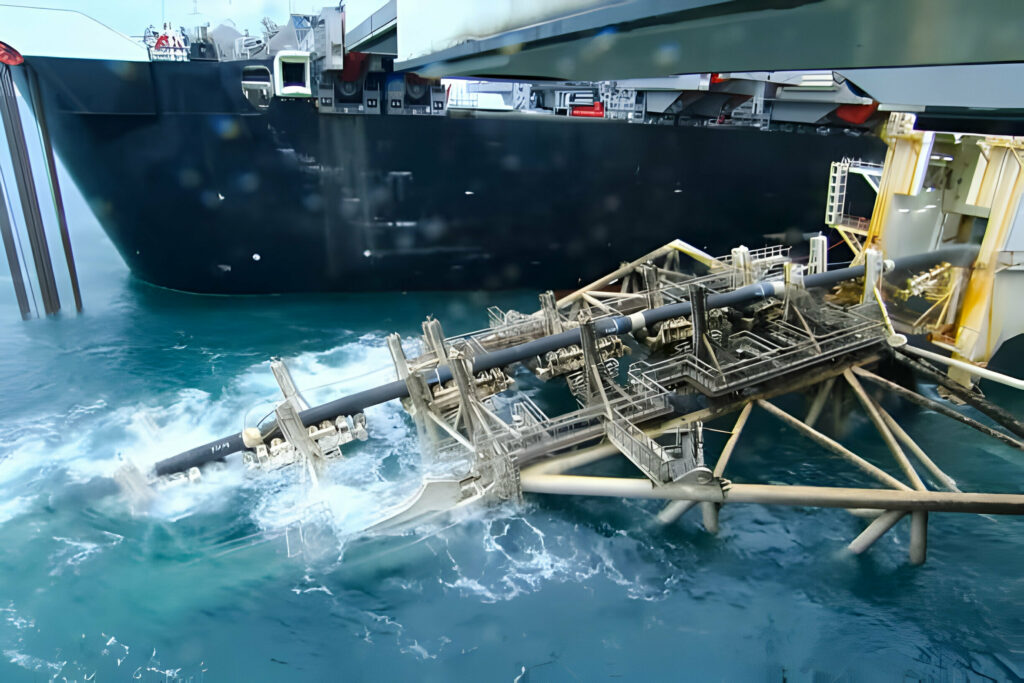
Underwater infrastructure plays a crucial role in shaping the future of global connectivity, serving as the backbone for much of the world’s communication, energy, and transportation networks. As we continue to rely more heavily on digital communication, energy exchange, and trade, the need for robust, reliable, and efficient subsea infrastructure has become more pressing. With technology advancing rapidly, the future of underwater infrastructure promises to be even more transformative, opening up new possibilities for global trade, energy solutions, and digital communication.
This article delves into how underwater infrastructure—from subsea cables and pipelines to undersea tunnels—is shaping the future of global connectivity and the ways in which this development is expected to evolve.
1. Underwater Cables: The Lifeline of Global Communication
The most well-known and perhaps the most critical form of underwater infrastructure is subsea cables. These cables are responsible for transmitting approximately 99% of the world’s digital data. From international internet traffic to voice communications and financial transactions, subsea cables provide the necessary pathways for global connectivity.
Current Trends and Innovations in Underwater Cables
- Fiber Optic Cables: Fiber optic cables, which use light to transmit data, have revolutionized global communications by offering extremely high data transmission speeds. As demand for faster internet speeds and more bandwidth grows, the expansion of fiber optic networks is becoming increasingly essential.
- Subsea Cable Networks: New subsea cables are continually being laid across oceans to meet the rising demand for high-speed internet. For instance, projects like the Marea Cable (which connects the U.S. to Spain) and FASTER (connecting the U.S. to Japan) are expanding the capacity of global networks, offering high-bandwidth, low-latency data transmission across vast distances.
- Improved Cable Technology: Modern subsea cables use repeater technology, boosting signals and ensuring stable long-distance communication. Additionally, innovations in cable design have made them more resistant to environmental threats like deep-sea pressure, underwater currents, and marine life.
How Subsea Cables Impact Global Connectivity
Underwater cables enable global communication and digital infrastructure, which have numerous benefits:
- Faster and more reliable internet: As more people and businesses worldwide rely on the internet, the demand for faster and more reliable data transmission increases. Subsea cables are essential in meeting this need.
- Improved global trade: Subsea communication cables enable real-time communication, which is essential for global businesses, stock markets, and the flow of trade.
- Expansion of the internet of things (IoT): The rise of IoT technologies, which connect devices globally, requires robust data transfer capabilities that underwater cables can provide.
As demand for higher-speed data and secure communication networks continues to surge, the development of new subsea cables will be critical to sustaining global connectivity.
2. Subsea Pipelines: Powering Global Energy Networks
Beyond communication, subsea infrastructure also plays a vital role in the world’s energy networks. Subsea pipelines are essential for transporting oil, gas, and increasingly renewable energy resources across oceans and seas. These pipelines connect offshore oil rigs, natural gas reserves, and renewable energy sources to mainland facilities.
Key Developments in Subsea Pipelines
- Natural Gas: Subsea pipelines, such as the Nord Stream pipeline, which runs under the Baltic Sea, deliver natural gas from Russia to Europe. The global demand for natural gas is expected to continue growing, making subsea pipelines an integral part of global energy security.
- Oil Transportation: Major oil pipelines like the Trans-Alaska Pipeline and various subsea pipelines that connect oil fields in the Gulf of Mexico to refineries onshore are critical to global energy production. Many of these pipelines operate at depths and under conditions that require sophisticated engineering solutions.
- Renewable Energy: Offshore wind farms and other renewable energy projects are also driving innovation in subsea infrastructure. New subsea cables are being used to connect offshore wind farms to the grid, enabling clean energy to be transmitted over long distances.
Impact on Global Energy Connectivity
- Energy security: Subsea pipelines ensure that natural gas, oil, and renewable energy resources are transported safely across vast distances, connecting energy-producing regions to consumer markets.
- Reducing reliance on land-based transportation: By connecting continents with underwater pipelines, energy transport becomes more secure and less susceptible to geopolitical tensions, natural disasters, or transportation bottlenecks that affect land-based routes.
- Supporting the renewable transition: As renewable energy becomes more prevalent, subsea energy infrastructure—especially the integration of offshore wind farms into the grid—is essential in facilitating the transition to a more sustainable energy future.
3. Undersea Tunnels: Connecting Continents and Nations
Undersea tunnels are another significant form of underwater infrastructure that contributes to global connectivity, especially in terms of transportation. These tunnels link previously isolated regions, enabling faster and more efficient movement of people and goods.
Iconic Undersea Tunnels Around the World
- The Channel Tunnel (Eurotunnel): Connecting the UK and France, the Channel Tunnel is one of the most famous examples of subsea transportation infrastructure. It carries both passenger trains (Eurostar) and freight beneath the English Channel, facilitating economic and cultural exchange between the two nations.
- The Seikan Tunnel: Located between the Japanese islands of Honshu and Hokkaido, the Seikan Tunnel is one of the longest undersea tunnels in the world. It provides a critical rail link, shortening travel time and enhancing logistical connectivity between the islands.
- Future Projects: Several ambitious projects are in the works to build undersea tunnels in places like the Bosphorus Strait between Europe and Asia, and the Baltic Sea to improve transportation links. These tunnels aim to reduce travel times, enhance trade, and improve the movement of people between continents and nations.
Impact on Global Transportation Connectivity
- Reduced travel times: Undersea tunnels dramatically reduce travel time between regions, making it easier to travel and transport goods.
- Improved trade flow: Tunnels provide a seamless connection between continents or critical transportation hubs, ensuring the smooth flow of goods, services, and people.
- Geopolitical impact: Subsea tunnels can reduce the need for air and sea travel, creating new trade routes and strengthening economic ties between neighboring countries and regions.
4. Environmental and Technological Considerations in Underwater Infrastructure
While underwater infrastructure is essential for shaping global connectivity, it also comes with environmental and technological challenges. As subsea projects grow in scale and complexity, engineers and policymakers must consider the following:
Environmental Impacts
- Marine Ecosystems: Underwater construction can disrupt marine life, especially when laying pipelines, cables, or building tunnels. Careful planning and mitigation strategies, such as monitoring marine habitats and creating artificial reefs, are vital to reducing damage.
- Pollution: Construction activities, such as dredging or using heavy machinery, can lead to water pollution, sediment disturbance, and other ecological impacts. New technologies, like less invasive installation methods, are helping reduce these effects.
Technological Innovations for Sustainable Infrastructure
- Robotic Subsea Systems: Autonomous underwater vehicles (AUVs) and remotely operated vehicles (ROVs) are revolutionizing the way subsea infrastructure is built and maintained. These robots can perform intricate tasks like cable laying, pipeline inspection, and maintenance, all while minimizing human risk and environmental disturbance.
- Sustainable Materials: Researchers are exploring the use of eco-friendly materials and methods to construct underwater infrastructure, such as using corrosion-resistant materials for subsea cables and pipelines to extend their lifespan.
5. The Future of Underwater Infrastructure
The future of underwater infrastructure is promising, with new technologies, sustainable practices, and large-scale projects that will continue to shape global connectivity:
- 5G Networks and Subsea Cables: As 5G networks continue to roll out worldwide, subsea cables will play an even greater role in supporting high-speed, low-latency communication, especially for remote regions.
- Carbon Capture and Storage (CCS): With the growing focus on reducing carbon emissions, underwater pipelines and infrastructure will be critical for transporting captured carbon to storage sites beneath the seabed.
- Smart Ocean Infrastructure: As the world’s oceans become more interconnected through smart technology, underwater sensors and data-collection systems will help monitor and manage subsea infrastructure in real-time, optimizing maintenance and performance.
Conclusion
Underwater infrastructure is at the heart of global connectivity, transforming communication, transportation, and energy systems. From subsea cables that carry the world’s digital data to pipelines that fuel economies and undersea tunnels that bring nations closer together, this infrastructure is shaping the future of how we connect, communicate, and trade. With ongoing technological advancements and a focus on sustainability, the role of underwater infrastructure will continue to expand, helping create a more interconnected and resilient global network for generations to come.
